Similar Posts
There’s theory and then there’s practice. The one flows from the other and back again, unceasingly. Their interdependence is indissoluble. Likewise, there’s “inner” drawing and then there’s “external” drawing. The first unfolds and takes shape in the imagination; the latter is the former’s manifestation. A masterful drawing seems to be as if a concrete and clear thought, as if we’re beholding the mind’s pure conception. The invisible becomes visible. A true image of perfection. This kind of drawing, in which the “inner” and “external” seem as if to perfectly coincide is something hard to come by. They seem to be only a non-existent ideal, especially in the realm of icon painting nowadays. But, they in fact do exist.
Not all trace. For those who can draw tracing paper is just another tool of the trade – it doesn’t get in the way. For those who can’t, it can never really compensate. The “trace” of evidence remains. The line itself confesses the lack of skill in spite of ourselves.
Not all is relegated to the icon pattern books of the past, the tracing of masterpieces – clumsy reiterations of someone else’s experience. Some icon painters today, as in the past, work from “inner” patterns written in their hearts. They speak from their own vision and experience. Their pictorial poetry is the “external” evidence. So much need not be said.
If my last series of posts, “Imagination, expression, Icon: Reclaiming the Internal Prototype,” seemed a bit excessively theoretical for some, here I leave you with concrete examples of drawings – the theory put to practice. They’re the work of the Romanian iconographer and art restorer Elena Murariu. Her masterful work is mentioned at passing in the OAJ article “The New Romanian Masters: Innovative Iconography in the Matrix of Tradition.” However, although some samples of her icons were included there, her drawings were not featured.
Her line is calligraphic, if not lyrical, and her touch is light. But there is also a painterly sensibility and plenty of mark making. The execution is deft, virtuosity without affect. The process always shows through and a polished finish is never the aim. Thin, crisp and almost wiry lines, seem to emerge out of the mist of broad strokes of smoky subtle tones. The overall transparency of the drawings, their rhythm and the traces of process, make them appear as if they’re visions taking concrete form right in front of your eyes. The compositions are unique interpretations, betraying vibrant and unquestionable creativity. The draftsman of these drawings bears clear witness that she has worked from internal prototypes – from her authentic experience. Theory has become practice.
So how does Elena Murariu do it? How does she approach the creative act? Her answer to this question of creative process in fact confirms, from personal experience, the more than theoretical dimension of the approach to icon painting proposed in our previous series:
True, there are some rules and canons in the painting of icons, but these canons should not be followed in the letter, but in their spirit. When you start to grow[…] then you realize how much freedom there is … Compliance with the canons in the icon is necessary as you need to abide by the road code! You get on the wheel and go, you’re free to start on any road. Freedom of movement is not impaired. In the case of the icon, the rules are made in such a way that they are compatible with human nature, the mirror of God. When your evil fear of breaking the rules disappears, then you can make connections and see some things that, even if they were in your neighborhood, remained hidden. Then some communication bridges open between you and God and some ideas are being communicated, if I can say so. You begin to become a kind of confessor by what you are witnessing to the divine beauty of this world.
Regarding the mental conception and its expression she says:
Before putting it on paper or wood, I paint it first in my mind […] I paint it in my heart and there I change its colors, the background, the vestment. It is a period of growing, kneading, which can take days, months, and even years. When I’m in front of the white […] I already know what I have to do, and I just have to take the icon to the light, bring it from the immaterial world of thought. I then catch things in matter that have already been painted in my soul.
This happens with many creators: neither those who write, nor those who make music start from scratch. They start from a thought, from a story, from something that is already ripe, outlined quite precisely in their depths. It is true that during your work you are making changes. Thought is not always clear as a tear! Taken into the reality of the world, it requires adaptations. In transmitting the thought, God has a fundamental role. “Except the LORD build the house, they labour in vain that build it,” says one line of a Psalm.[i]
Indeed, for most of us, during the process of “external” drawing many revisions take place, perhaps too many. The ghostly traces of erasures, those stubborn marks of evidence – the pentimenti – betray our muddled thinking and ineptitude. Thought is not always clear. It is hard to restrain and shape. Like smoke, it disperses as soon as we seek to grab it. Its embodiment most often than not misses the mark. Inevitably there’s always a give and take, even a battle, between the idea and the concrete format, surface and materials used. Perfection is elusive, as if a never attainable reality. The drawing becomes a confession of our incapacity to bring the theory into actualized practice. But, it gets better. Practice makes perfect. This we must never forget. The process of clarification is as important as the result. It in fact never ends. With it clarity increases “from glory to glory”. The process will only cease when we no longer see as if through a mirror and behold the Prototype “face to face” in the “inner chamber” of the Heavenly Kingdom.
So perhaps there’s less opposition between theory and practice than it would at first appear to be. They in fact tenderly embrace each other in unceasing interplay inviting us to persevere in the pursuit of clarity of expression, if not perfection. If we persevere, gems of creativity are born, as attested by the drawings of Elena Murariu. What follows are some samples, which being more than merely preparatory sketches, I believe function as icons on their own right.
For more samples and information on Elena Murariu’s work see her website.
[i] The quoted passages included here have been translated from Romanian and are part of an interview with Elena Murariu published in the article, “Elena Murariu si universul iconografiei Sfintilor Brancoveni,” in Român Orthodox în Franția, January 24, 2015. http://corortodox.blogspot.com/2015/01/elena-murariu-si-universul-iconografiei.html?m=1 (accessed 20 December, 2017).

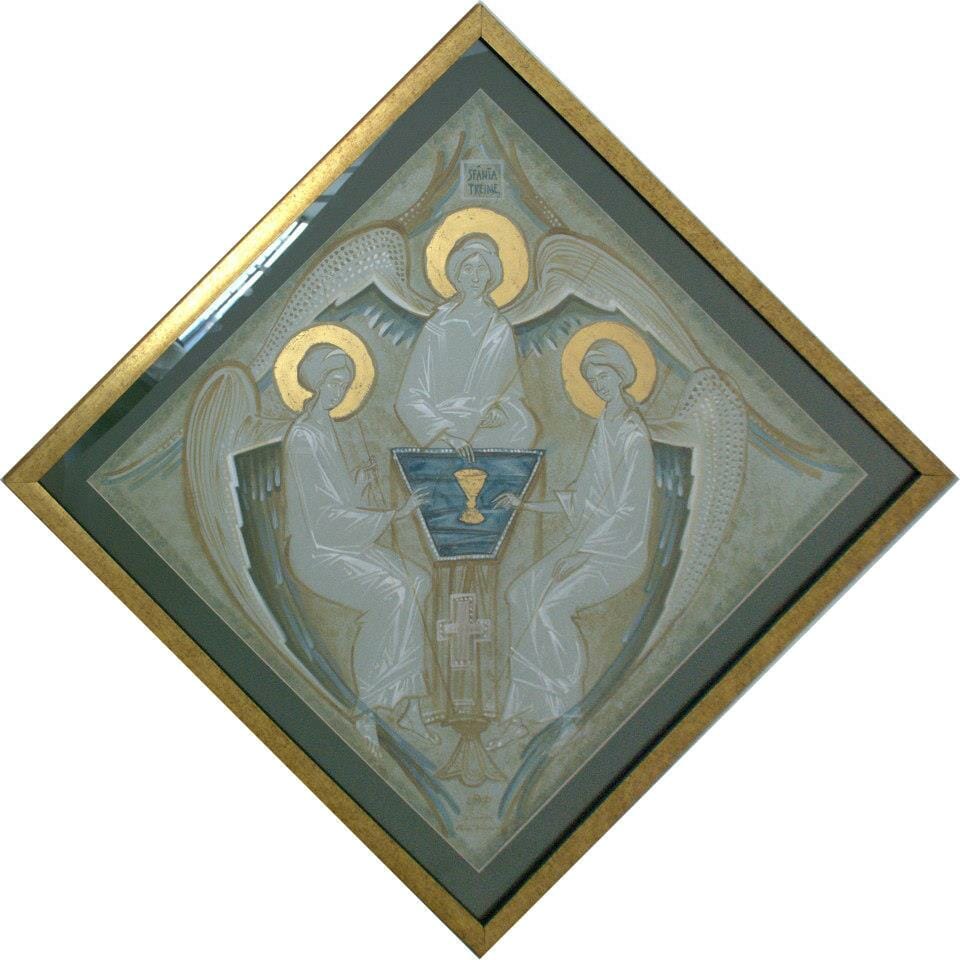
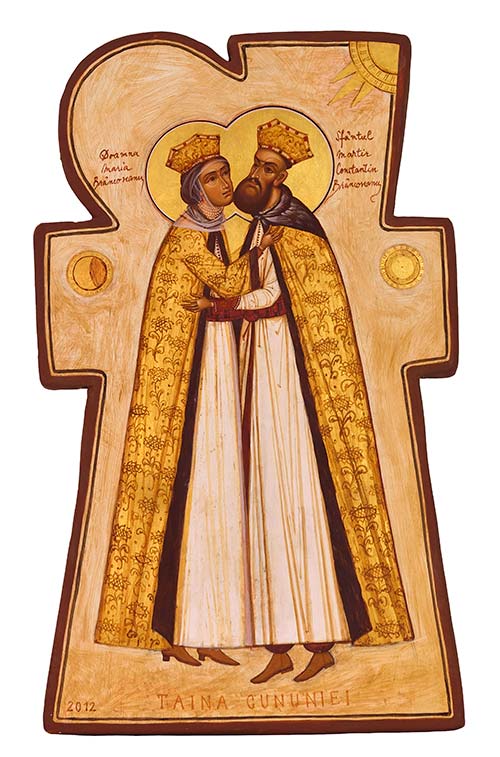
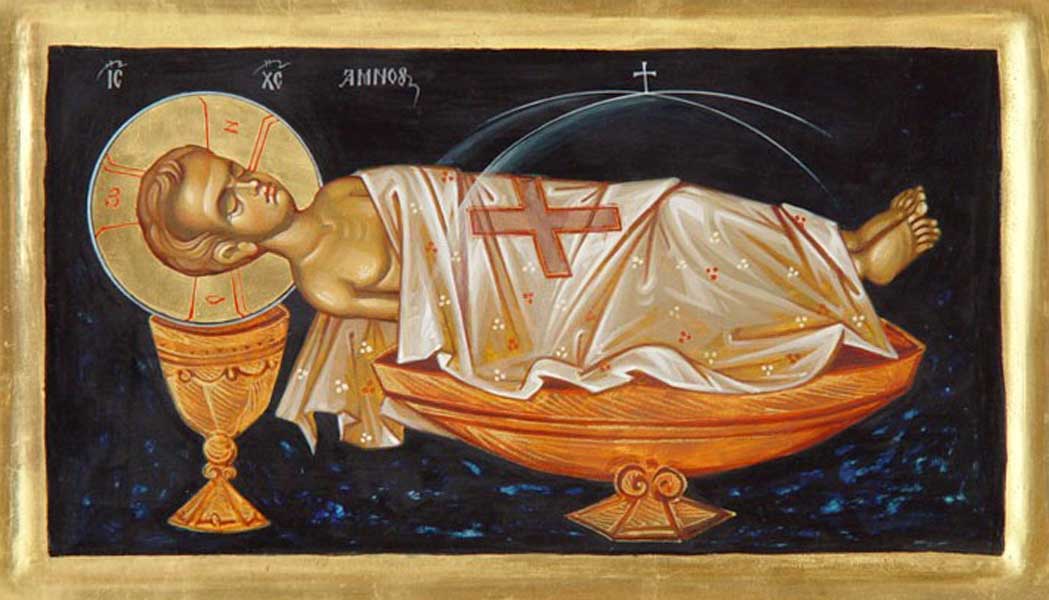





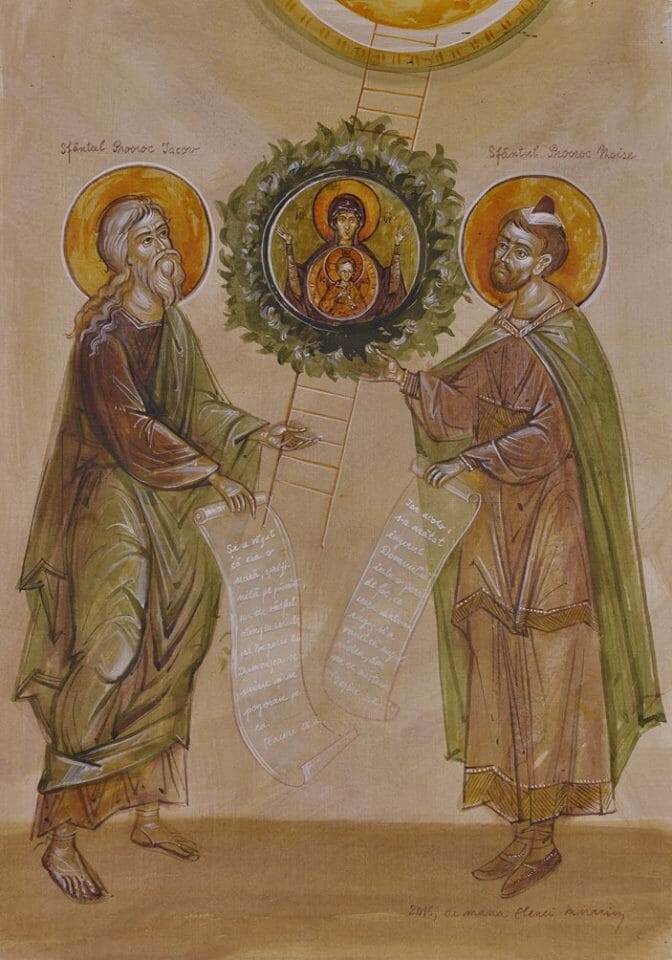


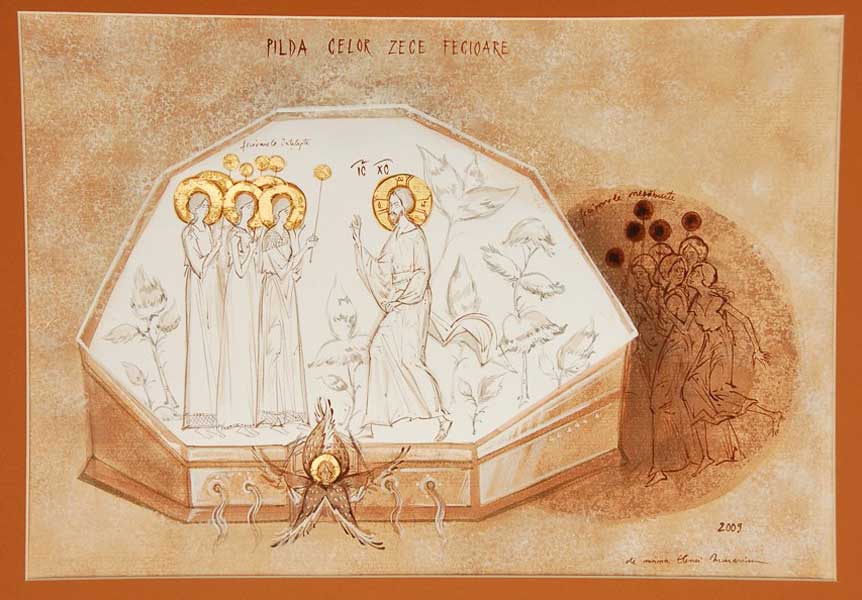
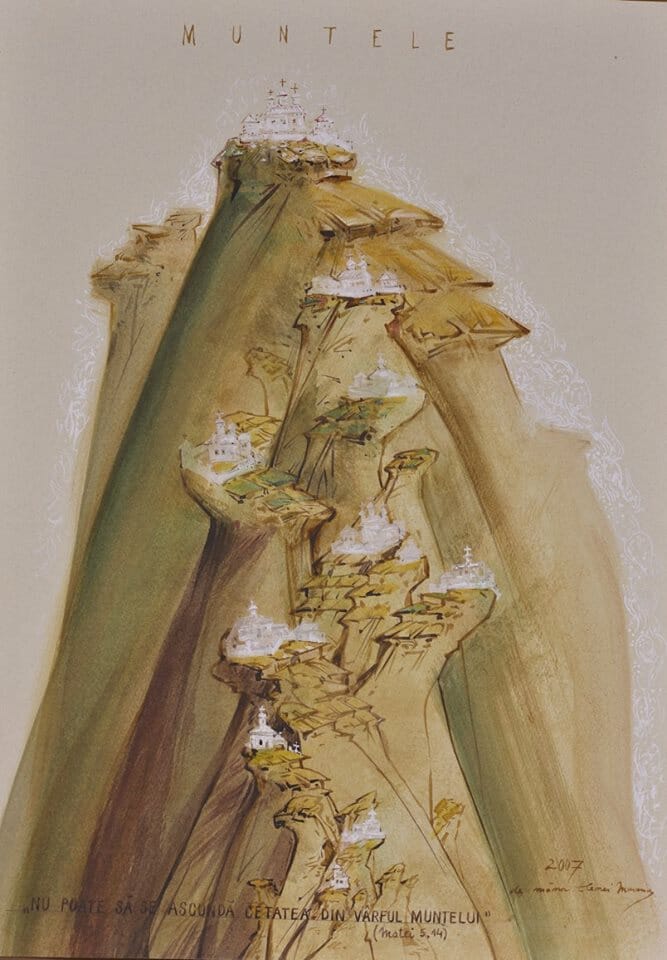
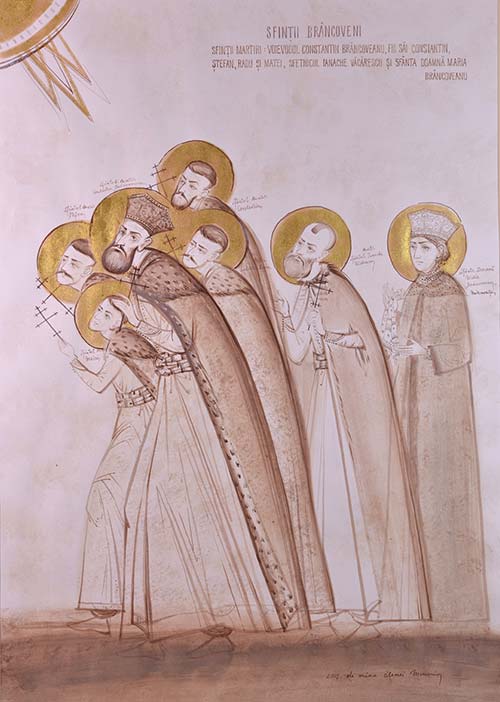
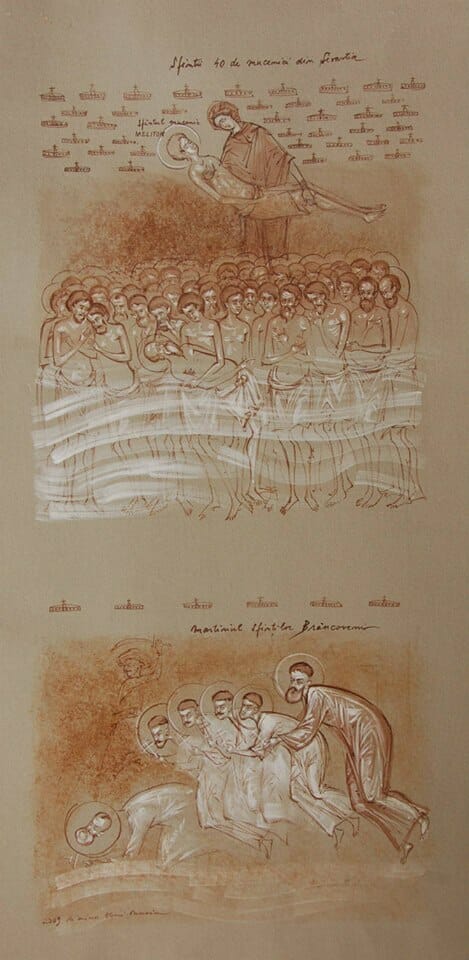
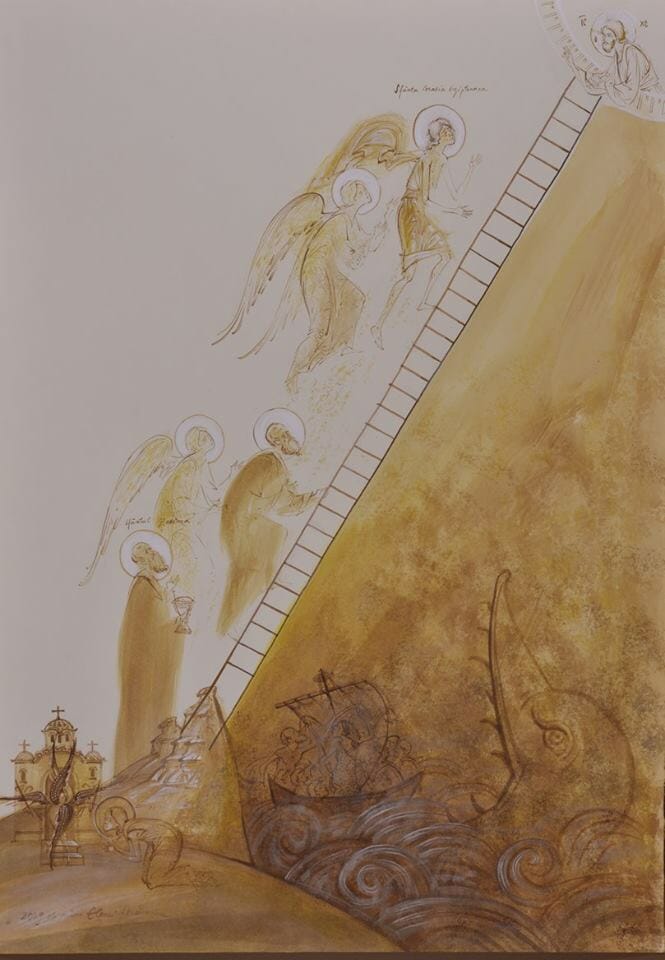








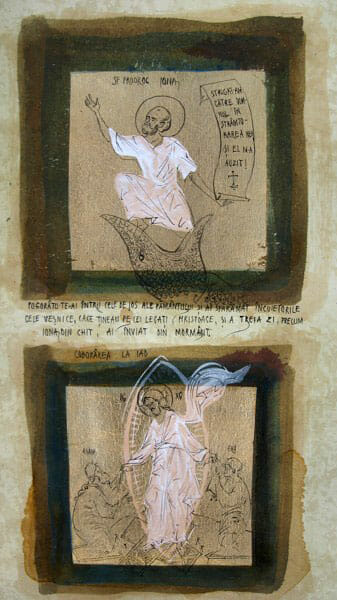
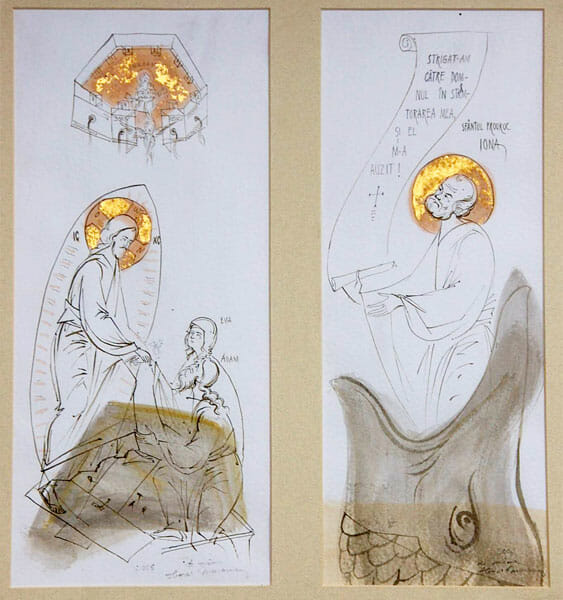


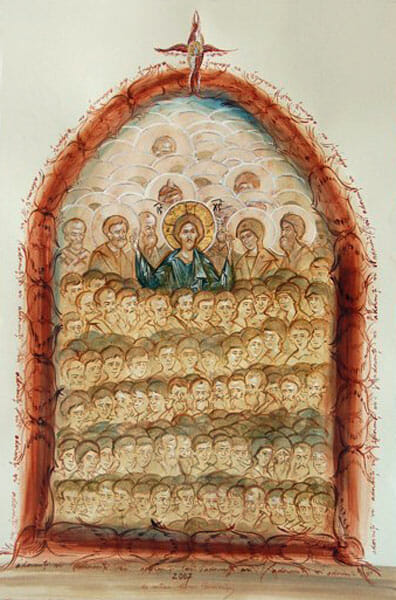
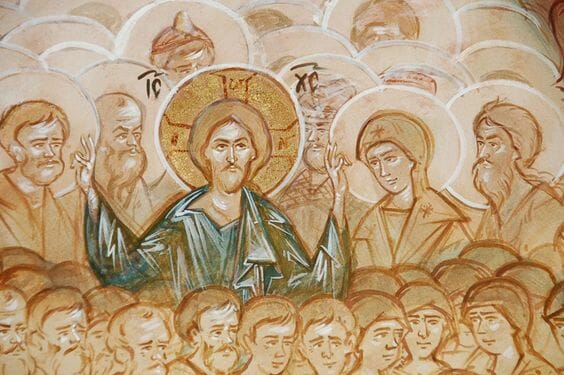


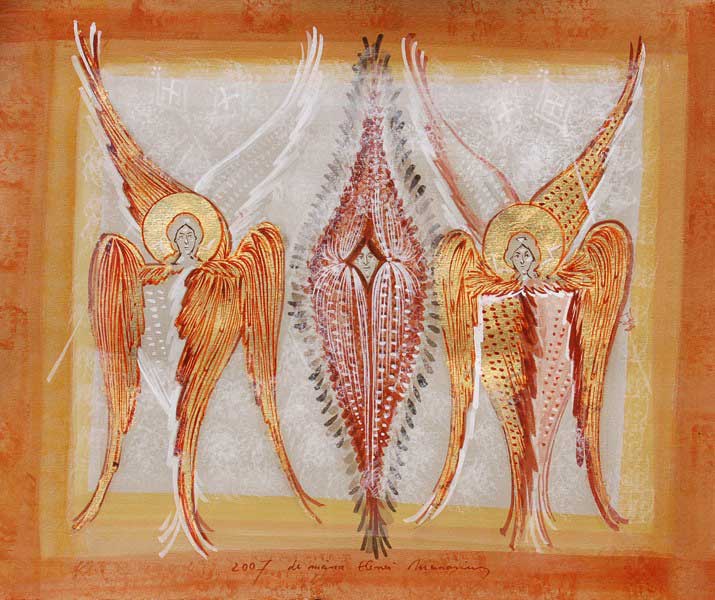
Thank you for sharing these works and your thoughts. All is indeed glorious and a blessing. Lesia
These drawings are astounding and also humbling in many ways. We have a long way to go it seems. Thanks for sharing these with us, Fr. Silouan.
and thank you JPageau for your work and followers leading us to them. You have opened a way to see iconic art.
I really love these works. Thanks for sharing
Reminds me a bit of Merab Abramishvili’s religious work.
Beautiful work, thank you.
Stunning work!